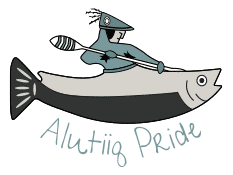BAT SONAR STUDY
Projects & Studies
Subsistence Alliance
Traditional
Foods Project
Migratory Bird
Project
Nanwalek Salmon
Enhancement Project
Lower Cook Inlet
Moose Composition
Bat Sonar
Study
Bat Sonar Study
Kenai Fjords National Park (KEFJ) has been conducting coastal bat surveys in the park since 2018 to better understand which bat species are present and to discover what habitats the bats forage in the park boundaries. KEFJ staff invited CRRC staff to partner with them and join their team in a weeklong bat sonar study in the Nuka Bay area of the park. They set up 11 acoustic bat recorders in different habitat types to identify bat-feeding habitats and document if any new bat species were in the park. To date, the little brown bat (Myotis lucifugus) is the only species of bat that has ever been documented within the park boundary

Bats are known to feed on insects over the ocean or smaller bodies of water, such as lakes and ponds. To reach these feeding sites from their roosting locations, bats use rivers and streams as corridors. The team bushwhacked through dense forests and shrubs to get to glacial lakes, isolated forested ponds, and open riverbeds. The bat recorders were mounted to trees at 11 locations within the KEFJ and remained in location until the team retrieved them in September 2022. The recording data is currently being analyzed to identify bat presence/absence and species. This study and continued studies are increasingly important as climate change alters subarctic environments and increases the spread of Pseudogymnoascus destructans, the fungus that causes white-nose syndrome.
This study’s purpose was to document the relationship between habitat and foraging locations of bat species in KEFJ and then use this relationship to create predictive models to identify primary feeding habitats across the entire coastal region of KEFJ. This model can then be used to develop management plans and more specialized studies in the future. The preliminary results show that the four most important habitat variables for predicting good foraging habitat are distance to coast, slope, aspect, and distance to conifer forests. The model created was able to predict bat foraging habitat with 87.5 percent accuracy. Lastly, a few of the bat recordings are still being examined for the presence of two other bat species that have only been found in Southeast Alaska. If you are interested in reading more, click here for the full NPS article.
Myotis lucifugus (little brown bat)



